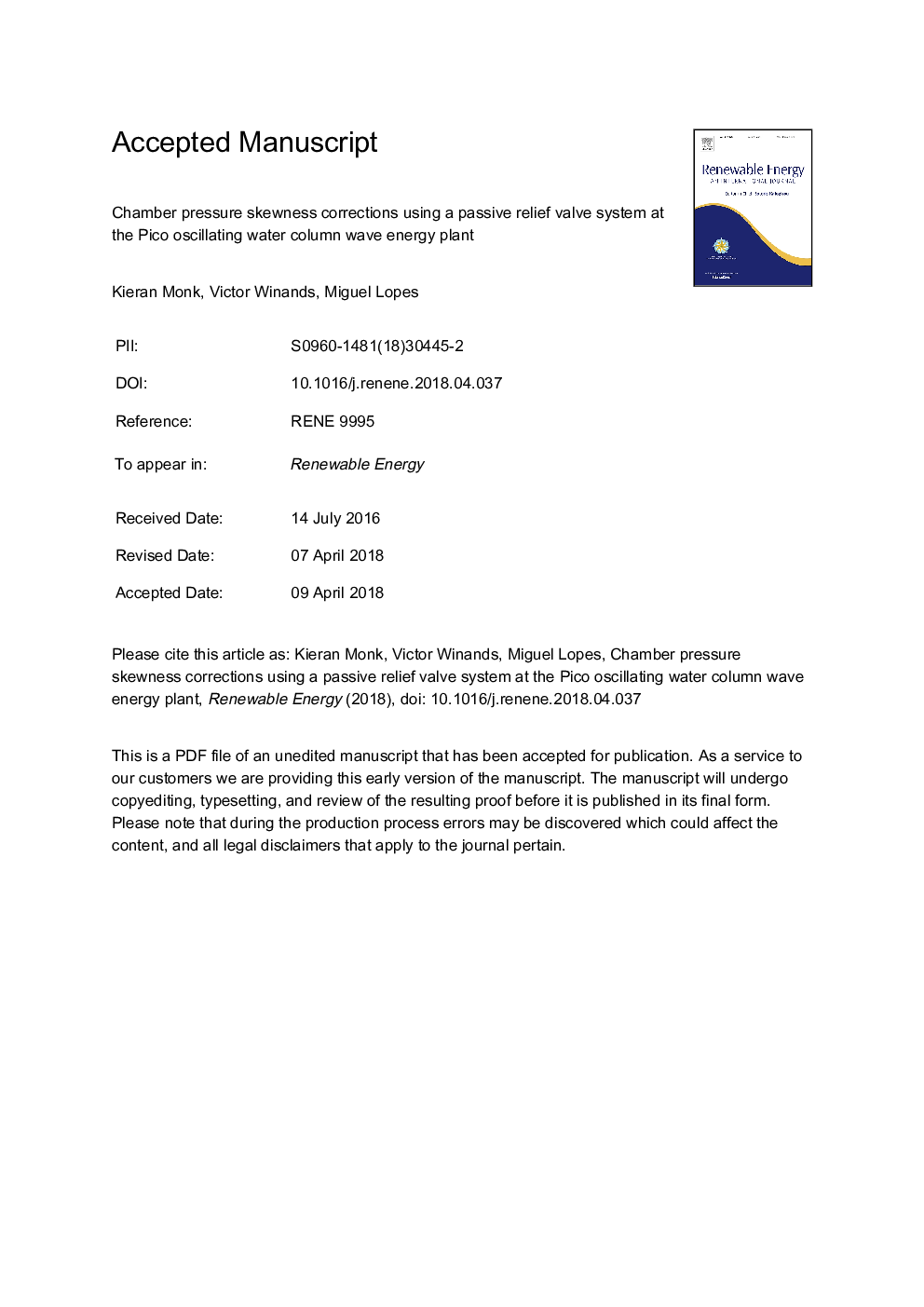| Article ID | Journal | Published Year | Pages | File Type |
|---|---|---|---|---|
| 6764026 | Renewable Energy | 2018 | 22 Pages |
Abstract
Power production levels at the Pico plant fall significantly short of pre-project estimates. Poor turbine performance compared to expectations from scale model testing accounts for much of this shortfall. Unanticipated chamber pressure skewness is also found to contribute to the deficit. This skewness manifests from wave shoaling because of the shallow chamber water depth from boulder collection and is worsened by intermittent chamber pressure losses caused by chamber wall defects. A passive non-return by-pass relief valve system for partially counteracting chamber pressure skewness is investigated. This functions by venting more of the unconvertible pneumatic over-power during the more intense but shorter duration exhalation half-wave cycles. At the same time, it retains more of the convertible pneumatic under-power in the weaker but longer duration inhalation half-wave cycles. This method reduces the degree of pressure skewness, which improves the system performance in higher energy excitation conditions. The passive relief valve specifications are optimised with a time-domain wave to wire model which is also used to project the expected plant performance enhancement in a range of wave conditions. Simulation results are compared to limited field tests results using a simple prototype passive valve system and good agreement is found.
Keywords
Related Topics
Physical Sciences and Engineering
Energy
Renewable Energy, Sustainability and the Environment
Authors
Kieran Monk, Victor Winands, Miguel Lopes,
